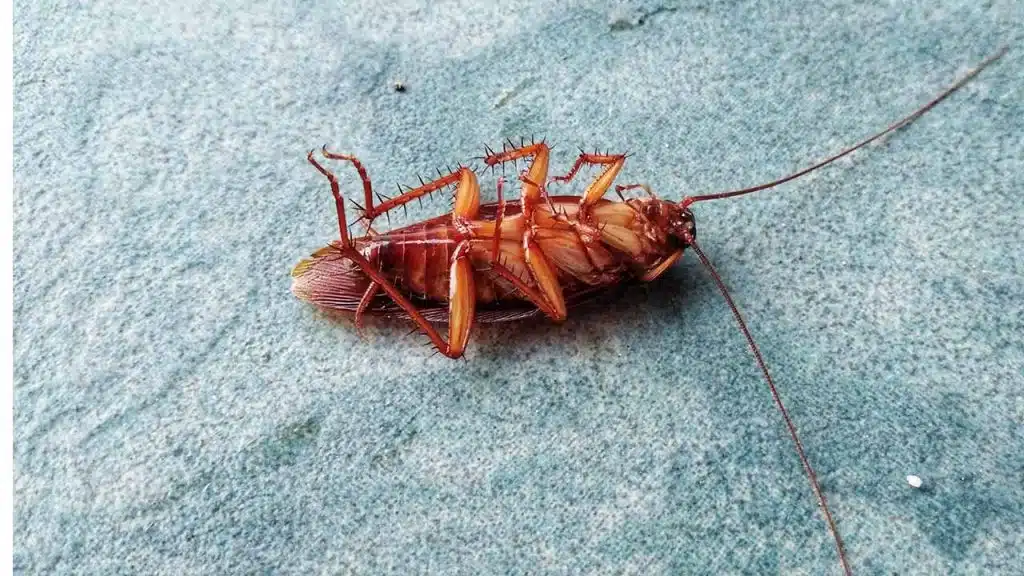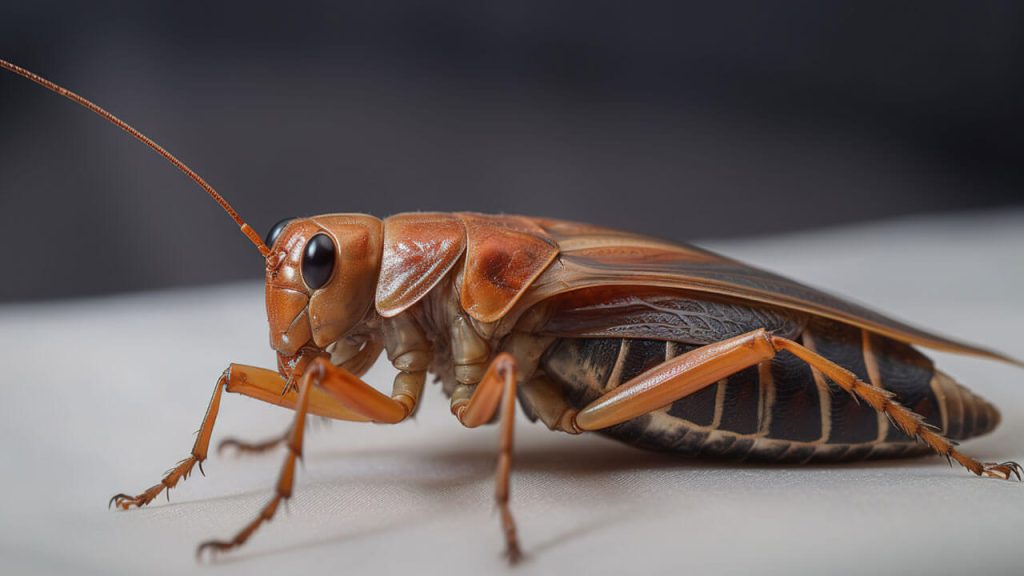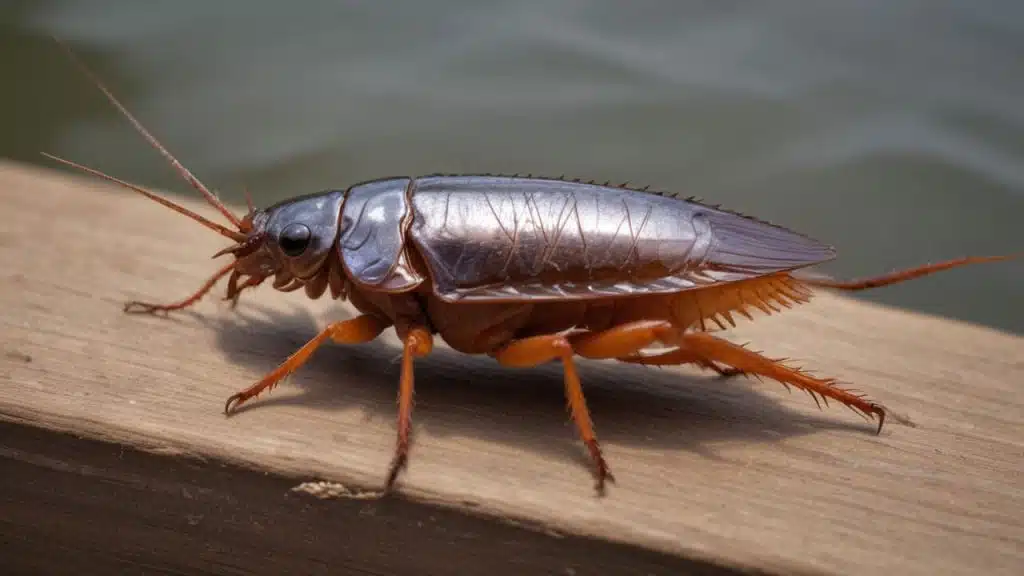

Wharf Roach Pest Control Service eliminates wharf roaches effectively. We offer safe, eco-friendly solutions for your pest problems.
In the world, beneath a harbor or ports lies a hidden world of life. Where creature like wharf roach live under the shadow of underwater structure. Despite their uncomfortable presence they play an important role in costal eco system.
Wharf roach usually classified as Ligia exotica. They belong to the isopod group which is close to crabs and pill bugs. This creature has a flattened body shape. This allows them to move through narrow space in docks and piers. Their antenna serves as sensory organs. That allows them to detect food and navigate through their environment.
One of the most integral aspects of wharf roach is that they are found in a wide range of ecological systems. They can be found along coastlines worldwide and also in tropical regions. Their tolerance in salinity and temperature allows them to overcome the challenges in their habitat. There they scavenge for decaying organic matter and algae.
The life cycle of wharf roach made of several stages. Understanding their life cycle provide insights about their biology, behavior and role in ecosystem.
Wharf roach are very opportunist feeders. They can eat a various range of organic matter that are found in their habitat. Their food primarily consists of algae, decaying plant, and carrion. They use their mouthpart to sherd and grind food into smaller particles. It helps them to consume and digest the nutrients.
Beside eating organic matter, they also eat microorganism and small invertebrate found in their environment. Their broad diet allows them to tackle food availability and exploit various ecological eco system.
Wharf roach are primarily nocturnal creatures roam under the cover of darkness. There they search for food and mating season. This lifestyle provides them protection from predators. Their flatten body and ability to retreat to crevices allow them to defense against threats. Though they remain vulnerable to many predators and fish.
Environment Type | Characteristics |
|---|---|
Marine | High salt content, tidal zones, rocky shores |
Freshwater | Low salt content, riverbanks, lakeshores |
Wharf roach play an important role in costal ecosystem. They also contribute to nutrient recycling by eating detritus and algae. They serve as a significant food source for high level of predators. That include bird, fish and crabs. Thats how they sustain bio diversity and ecological stability.
Despite their small size and often overlook presence they play vital role in environment. However, they face many threats from human activity.
Habitat Destruction: One of the most significant threats to white roach is habitat destruction. Coastal development including seawall can lead to loss of natural sealine habitats.
Controlling wharf roach population without harming the environment required a combination of different methods. Here are some eco-friendly strategies to manage:
Nutrient Cycling: Wharf roach contribute to the decomposition of organic matter such as decaying plants and algae. By breaking down this matter, they help recycle nutrients back into the eco system. This nutrient cycle is important for health and productivity of costal environments.
Indicator: The presence of wharf roach can be served as indicators of environmental health. Because they are sensitive to changes in habitat quality, pollution and other environmental factor. Monitoring their population can provided valuable insights to the condition of coastal area. Healthy population of wharf roaches indicate a well-balanced and functioning eco system.
Research Opportunity: Studding wharf roach can offer valuable insights to biology, ecological and adaption strategies. Researcher can learn from there resilience and adaptability to changing environment.

Wharf roaches are bugs that live near oceans. They like to be in wet places. Knowing how they act is important to stop them. This guide can teach you how to find and handle wharf roaches.
Wharf roaches are tiny bugs that are dark in color. They usually stay hidden under rocks and trash. Here are some signs that show they are around you:
Wharf roaches are bugs that can bother us and be dangerous. Let’s talk about some problems they cause:
Sign | Description |
|---|---|
Visible Sightings | Roaches seen in damp, dark areas. |
Droppings | Small black pellets found in infested zones. |
Egg Cases | Attached to surfaces near water sources. |
Unpleasant Odor | Distinct smell in infested areas. |
Acting early can stop pests. Pros should handle big problems.
Wharf roaches make babies quickly. Their life has three stages: egg, young, and adult. Moms hold eggs in a bag until they break open.
After the eggs hatch, the young insects called nymphs grow by shedding their skin many times. It takes them around three months to complete this process. Grown-up wharf roaches can survive for up to a year.
Knowing how and where wharf roaches live can help us stop them from spreading. To control their population, we need to create smart plans based on what we know about their habits. This is why learning about their homes and behaviors is so important!

Wharf roaches are bugs that like to live in wet places. You can stop them from coming by taking some steps. This part shows ways to keep wharf roaches out of your area.
To stop wharf roaches, you need to change your environment. Keep your place dry and clean. Wharf roaches like wet places, so fix leaks quickly.
Make sure there are no holes in walls, floors, or foundations that roaches can use to get inside. You can use caulk or weather stripping to fill in the gaps.
Sure, I can help with that. Here’s the simplified version: Put food in sealed containers. This stops bugs from getting to the food. Wipe up spills and crumbs right away. Take out the trash often and use bins with lids.
Environmental Modification | Action |
|---|---|
Fix Leaks | Repair any plumbing issues |
Seal Cracks | Use caulk or weatherstripping |
Store Food Properly | Use airtight containers |
Clean Spills | Immediately wipe up food spills |
Empty Trash | Use bins with tight lids |
Natural sprays can keep roaches away. Use peppermint and eucalyptus oils to make a spray. Spray it where roaches come in.
Sure, here’s the simplified version: Diatomaceous earth is a natural bug repellent. Sprinkle it where you see roaches. It’s safe for people and pets, but bad for roaches.
You can use bay leaves and cucumber to keep roaches away. Put bay leaves in cabinets and pantry. Use cucumber slices near where roaches might come in.
To stop wharf roaches from coming, do some things. Clean and keep your place dry. Block the ways they can enter. Use natural stuff to stop them. This will keep them away.
Wharf roaches are bugs that can bother people around docks and beaches. Some folks like to use safe ways to get rid of them. Natural methods work well and are good for the environment.
Making your own traps and solutions is a good way to deal with wharf roaches.
Baking Soda and Sugar: Mix the same amount of baking soda and sugar. Put the mix where you see roaches. The sugar brings them, and the baking soda gets rid of them.
Jar Traps: Put water in a jar and add some bread. Put petroleum jelly on the jar’s edge. Roaches will go in for the bread but can’t come out.
Soap and Water Spray: Mix a little dish soap with water in a spray bottle. Spray it on roaches. The soap stops them from breathing.
Organic bug sprays are good for stopping wharf roaches without bad chemicals.
Organic Pesticide | How It Works |
|---|---|
Diatomaceous Earth | Sprinkle in roach-prone areas. It dehydrates and kills roaches. |
Boric Acid | Mix with flour and sugar. Place the bait where roaches are seen. It poisons them when ingested. |
Essential Oils | Use oils like peppermint or eucalyptus. Mix with water and spray around infested areas. Roaches hate the smell. |
These ways don’t use chemicals, so it’s safe for everyone. Use these tips to get rid of cockroaches and have a clean home.
Getting rid of wharf roaches is hard. Pros have good ways to stop them. They use skills and tools to keep your place roach-free.
Here’s the rewritten paragraph: To get rid of pests, the first thing experts do is check how bad it is. They come to your place and look for where the pests are coming in, where they live, and what they eat. This is called an assessment.
After checking everything, they make a special plan. This helps the treatment work well and focus on the main issues. Having a good plan stops bugs from coming back again.
There are many ways to get rid of wharf roaches. Here are some common ways:
Natural Remedies: Using non-toxic substances to repel or kill roaches.
Each way has good and bad. Experts pick what’s best for bugs and safety.
Treatment Option | Pros | Cons |
|---|---|---|
Chemical Treatments | Quick and effective | Can be harmful if misused |
Traps | Non-toxic | May take longer to see results |
Bait Stations | Targets specific areas | Requires regular maintenance |
Natural Remedies | Safe for children and pets | Less effective in severe infestations |
When pest control experts use the right method, they can get rid of wharf roaches from your home. This makes your home safer and cleaner for everyone.

When you want to get rid of Wharf Roaches, it’s important to be safe and not hurt the environment or other animals. This part talks about ways to do that.
It’s important to pick eco-friendly bug control ways. These ways are good for nature and people. Let’s check out some good and safe methods:
IPM is like using different tools to control pests. It keeps the environment safe and controls pests for a long time.
It’s important to keep other animals safe when getting rid of Wharf Roaches. Other animals can be pets, helpful bugs, and wild animals.
Keep an eye out for Wharf Roaches. Look out for them regularly. It’s important to control them. Catch them early to stop them from spreading.
Regular checks are important for keeping pests away. They help find problems early. Inspectors should look at:
Create a plan to check things regularly and follow it. Check the important places every week. Every month, check the other places.
Using eco-friendly ways helps control pests for a long time. It also keeps the environment safe and makes homes healthier. Here are some sustainable ideas to try:
Practice | Benefit |
|---|---|
Natural repellents | Avoid harmful chemicals |
Biological controls | Use natural predators |
Regular maintenance | Prevent infestations |
Doing these things helps get rid of bugs and keeps nature safe. To keep bugs away for good, we need to be careful how we manage them.
Looking for bug help can be hard. You have many choices. This guide will help you pick the best service for Wharf Roaches.
When choosing bug services, think about these things:
Experience: Ensure the company has experience dealing with Wharf Roaches.
Roaches that live near the water can bother houses and businesses. Our bug control service got rid of these bugs from many places. Here are stories that show how we did it well.
Our team helped a family with many bugs in their beach house. The family tried to remove the bugs, but failed. We checked the house and found where the bugs were coming from.
We closed doors to stop bugs from coming in.
We used safe bug sprays to kill the bugs.
We gave advice to keep the house bug-free.
After 14 days, no insects were found in the house. The owner felt happy with the quick assistance.
There was a restaurant with bugs that made it dirty. The bugs made the restaurant bad. We made a plan to help the restaurant.
Step | Action |
|---|---|
Inspection | We identified infestation hotspots in the kitchen and storage areas. |
Treatment | We applied industrial-grade pesticides and traps in targeted areas. |
Follow-Up | We conducted weekly inspections to ensure no re-infestation. |
The restaurant removed the bugs in a month. They improved cleaning and people were happier.
There were bugs breaking things at a big building. We made a plan to get rid of them.
The tall building didn’t find any bugs for three weeks. Everything inside was safe, and the work began again.
Keeping your home free from Wharf Roaches is an ongoing task. You need to work hard to make sure they stay away. If you get help from pest control, your home can be clean and safe. Let’s go over the important things and talk about how to keep your home bug-free.
To keep your home free from Wharf Roaches, you need to always look for bugs. Check your home often for signs of bugs. Finding them early can stop a big bug problem.
Here are some tips for ongoing prevention:
Task | Frequency |
|---|---|
Inspect for signs of Wharf Roaches | Monthly |
Clean and dry potential breeding areas | Weekly |
Fix leaks and moisture sources | As needed |
Seal entry points | Quarterly |
Professional pest control inspection | Annually |
If you do these things, you won’t have Wharf Roaches in your home. Your home will be safer and cleaner for you and your family.
Wharf roach sometimes considered pests.They are important to health and balanced life of costal eco system. Controlling their population in eco-friendly way involves preventive measure, habitat modification and natural deterrents. All of them help to maintain environmental intracity. Additionally, they help in nutrition cycle, food web indicates their importance in costal ecosystem. By using sustainable management practice, we can ensure that these small creatures continue to support rich bio diversity of costal environments.
Wharf roaches are usually known as Ligia exotica, small creature related to woodlice and crabs. They are commonly found in coastal area, docks, piers.
Wharf roaches live in moist environment along the coastline. They often found in cervices, under rock and underwater structure.
Wharf roaches are scavengers that feed on variety of organic matter. They include decaying plant body, algae and carrion. Their food habit helps to recycle nutrients in coastal area.
Wharf roach are not harmful. They do not bite or spread disease. However, they are considered as pest as they invade in large number.
To manage wharf roach, use preventive measure like regular cleaning, water disposal, reduce moisture as clean around underwater structure.